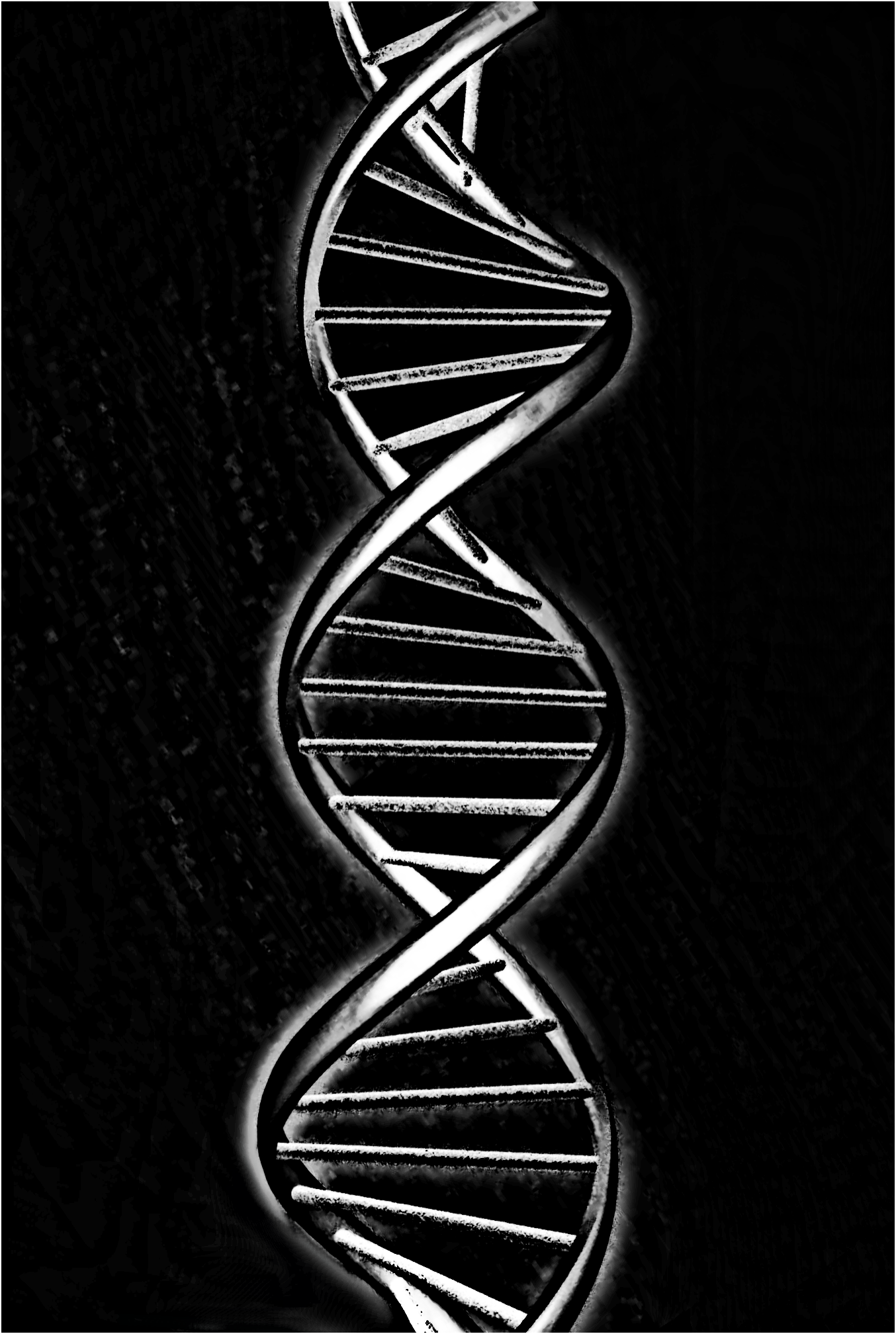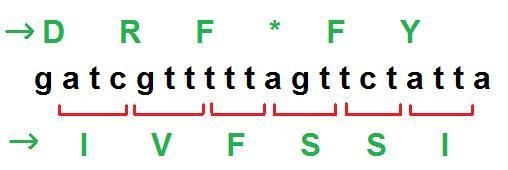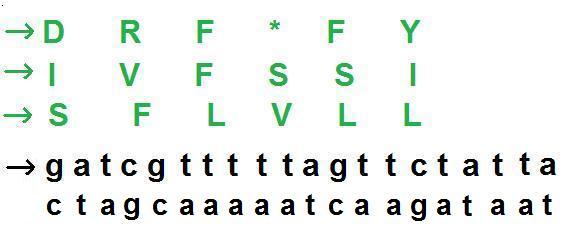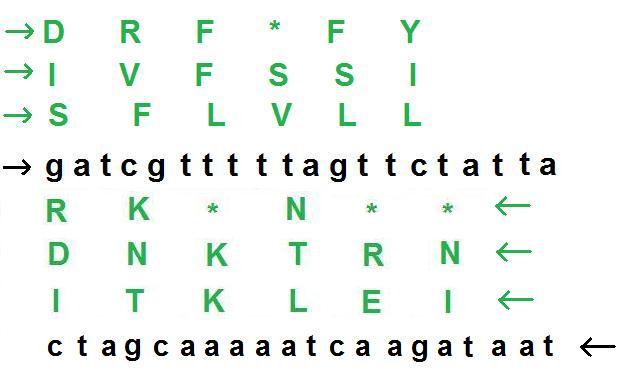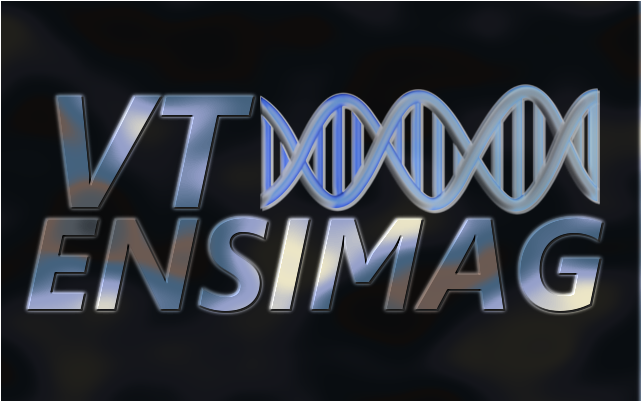Team:VT Ensimag 2010-Biosecurity/sixframe
From 2010.igem.org
| (One intermediate revision not shown) | |||
| Line 4: | Line 4: | ||
The six-frame translation consists in creating the 6 amino-acid corresponding to one nucleotide sequence. | The six-frame translation consists in creating the 6 amino-acid corresponding to one nucleotide sequence. | ||
| - | Indeed, the | + | Indeed, the nucleotide sequence, while synthesized, can be translate by the cell in different ways: it can : |
* Translate directly the sequence | * Translate directly the sequence | ||
** Begin on the first nucleotide | ** Begin on the first nucleotide | ||
| - | Each triplet of nucleotides (codon) codes for one amino-acid. In taking the corresponding one for each codon of the sequence, we obtained the first amino- | + | Each triplet of nucleotides (codon) codes for one amino-acid. In taking the corresponding one for each codon of the sequence, we obtained the first amino-acid sequence. The codon stop is represented by a star. |
[[Image:VTENSI_Sixframe1.jpg|center|300px]] | [[Image:VTENSI_Sixframe1.jpg|center|300px]] | ||
** Begin on the second nucleotide | ** Begin on the second nucleotide | ||
| - | The translation can also begin at the second nucleotide, so we need to check also the second strand of amino- | + | The translation can also begin at the second nucleotide, so we need to check also the second strand of amino-acid. |
** Begin on the third nucleotide | ** Begin on the third nucleotide | ||
Similarly, we have to check for a translation beginning in the third nucleotide. So we now have the 3 corresponding amino-acid sequence for the direct order. | Similarly, we have to check for a translation beginning in the third nucleotide. So we now have the 3 corresponding amino-acid sequence for the direct order. | ||
[[Image:VTENSI_Sixframe2.jpg|center|300px]] | [[Image:VTENSI_Sixframe2.jpg|center|300px]] | ||
* Translate the reversed complementary sequence | * Translate the reversed complementary sequence | ||
| - | The nucleotide sequence can be a 5'-3' one, so we have to take the complementary reversed sequence. The complementary sequence is just the same one in taking for each base pair its complementary (A-T, C-G). This sequence will so be read in the | + | The nucleotide sequence can be a 5'-3' one, so we have to take the complementary reversed sequence. The complementary sequence is just the same one in taking for each base pair its complementary (A-T, C-G). This sequence will so be read in the reversed order (from the last nucleotide to the first one). |
[[Image:VTENSI_Sixframe3.jpg|center|300px]] | [[Image:VTENSI_Sixframe3.jpg|center|300px]] | ||
as in the direct order, the translation can begin in the first, second or third nucleotide. | as in the direct order, the translation can begin in the first, second or third nucleotide. | ||
| Line 27: | Line 27: | ||
<br> | <br> | ||
<br> | <br> | ||
| - | [[ | + | [[Team:VT-ENSIMAG/Genothreat|Go back to GenoTHREAT page]] |
}} | }} | ||
Latest revision as of 12:40, 12 October 2010
Six frame translation
|
Each triplet of nucleotides (codon) codes for one amino-acid. In taking the corresponding one for each codon of the sequence, we obtained the first amino-acid sequence. The codon stop is represented by a star.
The translation can also begin at the second nucleotide, so we need to check also the second strand of amino-acid.
Similarly, we have to check for a translation beginning in the third nucleotide. So we now have the 3 corresponding amino-acid sequence for the direct order.
The nucleotide sequence can be a 5'-3' one, so we have to take the complementary reversed sequence. The complementary sequence is just the same one in taking for each base pair its complementary (A-T, C-G). This sequence will so be read in the reversed order (from the last nucleotide to the first one). as in the direct order, the translation can begin in the first, second or third nucleotide.
At the end, we obtain 6 amino-acid sequences. We also keep the 2 nucleotide sequences. |
 "
"

